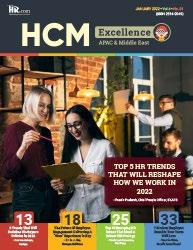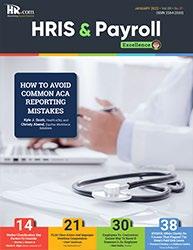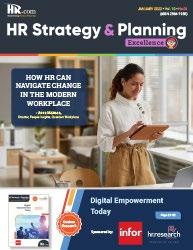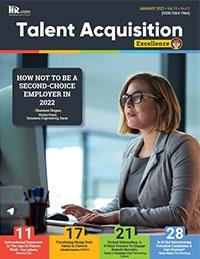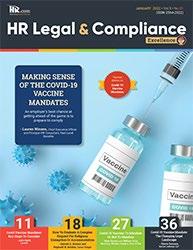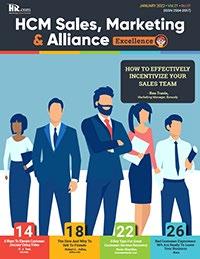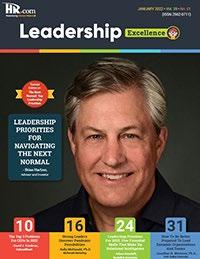


Leading Digital Transformation With Purpose

It's very much possible to bring technology to do what you need - Anupam Nandwana, Founder and CEO, P360





It's very much possible to bring technology to do what you need - Anupam Nandwana, Founder and CEO, P360


How are implicit biases harmful?
- Terron Wilson, DEI Manager, 84.51˚
Leadership begins and ends with understanding open-mindedness, patience, and humility
- Joan Marques, Professor of Management, Woodbury University

Understanding and implementing the elements of a conversational AI ecosystem
- Robb Wilson, CEO/Founder & Josh Tyson, Director of Creative Content, OneReach.ai






Nataraj
For customer service, or information on products and services,
1-877-472-6648
Debbie Mcgrath Publisher, HR.com
In today’s business world, the term “digital transformation” is everywhere. From a consulting company to a manufacturer to a C-suite executive, everyone wants to execute digital transformation. A successful digital transformation begins with a strong leadership vision that focuses on the future and explains why employees should work toward creating that future. What is the role of leadership in digital transformation? What makes digital transformation successful?
The October edition of Leadership Excellence includes articles that focus on leadership and digital transformation, the evolving post-pandemic workplaces, addressing implicit biases in the workplace and much more.
Digital transformation is ultimately about people and improving organizational efficiency. And any kind of transforma tions involve HR because they impact culture, change management, and employee experience. In her article, What Digital Transformation Leadership Looks Like for HR, Betterworks' Jamie Aitken discusses what makes digital transformation successful and what undermines it.
P360's Anupam Nandwana in his article, Leading Digital Transformation With Purpose, outlines what's necessary for any company to move forward in the digital age.
From a business perspective, implicit biases undermine productivity, innovation,

employee morale, business results, and more. Learning how to recognize our biases and disrupt them are critical for building an inclusive and diverse workplace. Read, 5 Proven Ways To Shatter Implicit Bias In The Workplace by 84.51°'s Terron Wilson, that talks about creating a workplace where all employees experience a sense of belonging and can do their best work.
Take a look at the latest research and expert opinions on the changing workplace and explore what you can do to create an environment, where everyone feels safe and included in Natasha Nicholson’s (Kantola Training Solutions) article, How To Create
A Work Culture Where Everyone Can Thrive In A New Office Environment
Also included is an exclusive interview with Dr. Lisa-Moné Lamontagne, People Success Leader, Unit4, where she talks about her HR journey and shares valuable insights on the role of CHRO today and in the future.
We hope you find some helpful tips and takeaways from the informative articles on digital leadership and other leadership strategies in this issue of Leadership Excellence.
Do let us know your thoughts, suggestions, and feedback on our articles.
Happy Reading!
Leadership Excellence
In a world of unparalleled challenges (global pandemic, racial injustice, polit ical rivalry, digital 4.0, emotional malaise), uncertainty reigns. Finding oppor tunity in this context requires harnessing uncertainty and harnessing starts with reliable, valid, timely, and useful information. The Excellence publica tions are a superb source of such information. The authors provide insights with impact that will guide thought and action.
Rensis Likert Professor, Ross School of Business, University of Michigan Partner, The RBL Group

I have really enjoyed both reading and contributing to HR.com’s magazines over the past year. As a scholar-practitioner, it has been a wonderful outlet to share my current academic research with a broader practitioner audience, in a very timely manner. If you want to reskill and upskill your workforce, point them towards the wide array of offerings from HR.com.
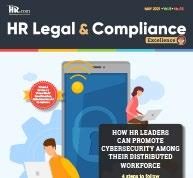
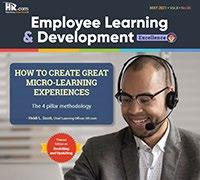

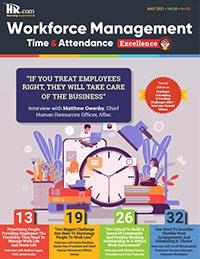
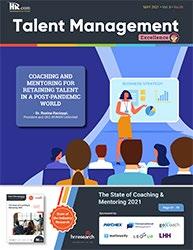
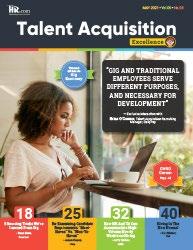
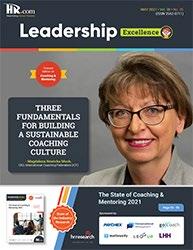
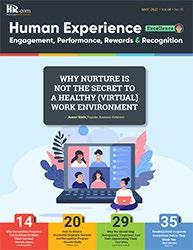


Chair/Professor | Organizational Leadership Academic Director | Center for Social Impact Faculty Fellow | Center for the Study of Ethics Utah Valley University
During the COVID pandemic, I have learned that I need a source that provides high-quality, cutting-edge, and timely information on a wide-variety of topics. HR.com’s Excellence Publications has been that source for me.
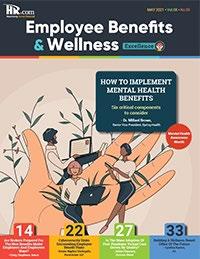
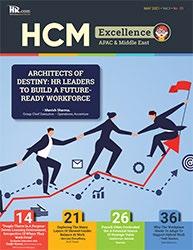
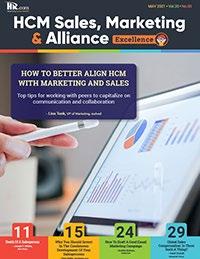


Consultant/Trainer/Speaker/Coach Assistant Professor - California State U. Fullerton
ago, I was working for a large, global manufacturer. In HR, we were excited about the notion of having a digital solution — an HRIS system — to automate what was then a lot of manual processes that were a heavy lift for both HR and managers, particularly around performance management. Our paper-based processes required us to chase people around and coerce managers to engage in what felt like a forced activity from HR, rather than something they believed was valuable.
While we were thrilled with the idea of automation, it bears pointing out that the term “digital transformation” has two equally important words. You can make a process much more efficient by digitalizing it. But, if you’re not taking the time to first look at the underlying processes and rules to
determine what to keep and what to discard from the perspective of the employee experience, you’re just making existing processes faster. These won’t necessarily be people-friendly, valued, or adopted.
Transformation takes time and courage to look at what’s working and what’s not, to make hard decisions about what to fold into your digital transformation and what to toss. This applies to more than HR processes. Digital transformation — whether it’s a new finance process, a new manufacturing process, or a new sales process — is ultimately about people and improving organizational efficiency.
All these transformations involve HR because they impact culture, change management, and employee experience. HR’s role is to understand the pain points of switching, training, adoption, and
usage for employees so that the company redesigns processes to be as frictionless and streamlined as possible and to properly communicate the changes to the organization. HR leaders also serve as the voice of the stakeholders. We are the guides who help employees through the process, as well as hold them accountable, and ensure the processes are sustainable for all.
For these reasons, business transformation is tied to HR transformation, and HR must have the courage to take on the mantle of innovation. Before
we cover what makes digital transformation successful, we first need to tackle what undermines it.
Digital transformations can become expensive boondoggles for a number of reasons, but let me focus on the top ones.
Here’s why digital transformation will succeed only with HR
It’s common for organizations to zero-in on the technology itself as the solution, instead of first thinking about desired outcomes, which include peoples’ experiences. Technology is only an enabler of these, and so, must accommodate what the business is trying to achieve strategically and for its employees.
Closely related to this is the misguided allure of the all-in-one HRIS/HCM solution. Deploying one may enable you to check-off multiple boxes in the short-term, but sometimes at the expense of an optimal long-term outcome. These behemoths have value, but they have been built primarily as repositories of
employee data for compliance and reporting purposes. They haven’t been designed around the concepts of promoting positive, consumer-grade employee experiences in the flow of work, meaning, in the applications employees use every day. In fact, our own recent performance management research revealed that having the wrong technology tools is worse than having no tools at all when it comes to performance, engagement, and alignment with strategic business objectives.
A case in point for how to do things right is the University of Phoenix. The university decided to replace its HRIS performance management module with Betterworks performance management. But

first, it designed the performance management processes it wanted – doing away with the universally dreaded annual performance review and replacing it with more flexible and frequent performance conversations. Then the organization found the technology that best met its employees’ needs. You can read more about this in the University of Phoenix case study from 3Sixty Insights
We all understand the analogy of building a house on a poor foundation. In much the same way, if you layer technology on top of broken processes, the cracks will show up a few months to a year out, leaving you with a costly investment and perhaps a costlier and time-consuming fix.
We often see this in performance management processes, for example. HR has known for years that traditional performance reviews, which were developed more than 70 years ago, are disliked by everyone, including HR. And, they don’t yield better performance. Yet, many companies retain these processes and have designed additional ones, such as calibration, around it, only compounding the problem. HR and business leaders need to understand what’s broken and be willing to discard it.
A fourth key failing in digital transformation comes from the belief that a solution can be designed and rolled out by HR, Finance, IT, or any
department without listening to all stakeholders that will be impacted by the transformation. They need to be part of the design process. If we build in isolation according to our own standards but without listening to employees to understand the use cases and potential pitfalls, we may well end up with a failed initiative that further frustrates and breaks their trust.

As HR leaders, we touch all parts of the business. One of my colleagues in leadership at Betterworks believes the next generation of CEOs will come from the ranks of HR — from individuals who have led
with an operational focus and the empathy needed to lead companies today. We must have a seat at the leadership table. If any of you don’t have this, stake your claim. Now is the time. As we help lead the business, we must demonstrate courage and resolve in these areas.
Take a hard look at processes and behaviors, and be willing to question why your company is doing things a certain way. Is it because that’s the way it’s always been done? Does it make sense to continue or rethink processes? What could your company be doing differently that would yield a better result in retention, engagement, or strategic alignment, for example?
WhatHR should be able to explain why retaining or disposing of approaches makes both “sense” and “cents” to the business – to borrow a phrase from Leapgen co-founder Jason Averbook. Rather than focusing on a new technology or process that will make life easier for HR, explain how the business benefits. HR competes with other functions for investment dollars and must be able to articulate a compelling business case.
Data storytelling is critical to proving the value of a proposed reset and investment. While it can be challenging to extract and assemble relevant data from the pockets where it resides, the analysis can yield surprising and powerful insights. Be curious about the data, how you can apply it, and what discoveries you might make.
Understanding technology is table stakes for HR, especially in the hybrid and remote work environment. Beyond that, digital transformation is never done; it’s an ongoing and iterative process. What worked five years ago may not work today. HR leaders must be up to the task of continually consuming and understanding technology innovation to help their companies stay current, remain employee-focused, and deliver consumer-grade experiences.
5. Collaborate Cross-Functionally
Strategic oversight and collaboration with IT and the CIO are essential for digital transformation. When designing new processes and systems, it’s also critical to work with all stakeholders who will be affected by the change. We can’t design in a bubble, based on what we or a small group of decision-mak ers think..
The next generation of CEOs will come from the ranks of HR - from individuals who have led with an operational focus and the empathy needed to lead companies today.
When inviting multiple stakeholders into any process, it takes courage to hear and act upon their comments. We may discover processes are more broken than we think. Listening and striving to make work better for employees will build trust and show that we care about building an employee-first environment. By being open to what employees are telling us about what is and isn’t working with technology, we can help drive responsiveness and better outcomes.
7. Listen and Act Through Feedback Loops How will you know if your
initiative is working? What will you do if it’s not working or meeting resistance? Here again, employee listening can yield important findings for the organization, while positioning HR as essential to facilitating employee-first solutions.
HR is at the Apex of “Big” HR has been called on to do a lot in the past few years. Many, understandably, feel burned out. But if you’re in HR, take a moment to reflect on what you’ve accomplished and to think about the expansive landscape ahead.
There is no better time to be in HR than now. You know what needs to be done. You see the possibilities ahead, both for the people you serve and your own development. You have the opportunity to help organizations transform, to make work better for everyone, within your grasp.
Jamie Aitken is Vice President of HR Transformation at Betterworks, a role in which she supports Betterworks customers with innovative strategies to improve talent management practices, employee engagement, and culture.

 By Anupam Nandwana, P360
By Anupam Nandwana, P360
Intoday’s business world, the term “digital transformation” is ubiquitous — to the point of being overused. Every consulting company has a digital transformation practice. Every manufacturer realizes they need digital transformation to remain competitive. Every C-suite executive wants to execute digital transformation. It quickly becomes overwhelming.
Despite the relative newness of the term, digital transformation has been with us since the 1970s
when people first started using computer-aided design. The popular use of the internet in the 1990s propelled us into the digital age, and the current thinking is that without digital transformation, a company cannot survive. The rubber manufacturer thinks, “We have to conform to tire-manufacturer requirements.” The physician thinks, ”I need to work with the pharmaceutical industry.” The banker thinks, “I have to abide by government regulations.”
It's very much possible to bring technology to do what you need
Every company, in a sense, is operating as a technical company, as a digital company. It's almost immaterial what your end finished product is — whether you are manufacturing electronics or medicine or airplanes. All of these areas utilize digital transformation. What differentiates you from your competitors is how well you are executing your business.
Business leaders know that customers (both B2C and B2B) have high expectations for their digital experiences. Gartner has found that 84% of people are underwhelmed with these experiences. As such, businesses rush to implement new software or build their own. But rushing can lead to folly. Leadership needs to undertake digital transformation with purpose.
You need to clearly define what your end goal is and understand that you are not reinventing the wheel but making the wheel better — more effective and efficient. For instance, a software company exists because its goal is to improve business processes. It wants to optimize manufacturing processes, supply chain delivery, and customer engagement. A wellplanned and well-executed digital transformation can make this possible. Every digital transformation revolves around data and customer experience. This pertains to doctors as equally as it does to internet marketplaces or nonprofit organizations.
Good outcomes in customer experience and data management are paramount to reaching the overarching goal. Before a digital overhaul can take place, everyone — the C-Suite, HR, and middle management alike — needs to achieve consensus on the vision of the organization. Leadership cannot rely just on marketing or HR saying, ”We need to buy this software now.”
Businesses need buy-in from the top down. How does the software or any technology you are considering fit into your ecosystem? The cost of operating definitely deserves consideration. Some of the leading vendors may be providing everything you need to run your business, but is it a good decision? You could be purchasing a different software from
the same vendor because you bought from them previously without taking into consideration that their product is substandard.
These decisions need to be evaluated in the context of what's more important, getting the right software, supporting the same vendor, or getting a new vendor that would require training. And learning curves are hard. These are the key criteria you need to consider — even before you start looking at new features and capabilities.
In order to launch a company-wide digital transformation, leadership must define its goals and objectives, communicate those to all stakeholders, and be prepared for the naysayers — in other words, a classic SWOT analysis (which preceded the digital age).
I believe that we are on the tail end of the resistance point to accepting cloud technology. A lot of companies initially registered the cloud as akin to a data center. That was two to five years ago. They were not sure if they could move to the cloud or if it was safe. I think — and hope — that we have gotten over that hump. Most companies now recognize the only way to achieve a solid digital transformation is by migrating to the cloud.
Scalability, flexibility, and agility are necessary for any company to move forward in the digital age, and cost-efficiency can only come from operating in the cloud. In reality, the only people who questioned the cloud and its security had to ask themselves, ”Am I more powerful than Microsoft, Amazon Web Services, and Google to manage my own data center, my own security, my own office, and everyday internet threats?” The answer is no. The majority of businesses do not have those kinds of resources. It’s not their primary business, which is the business of making their unique product. It's important that we trust this large-scale technical care the cloud provides us. I'm not saying it's a blind trust, but I think those companies have earned that credibility. It makes sense to tap into that — to trust the cloud.
Not every business or organization can afford to adopt a fully-stacked digital do-over in one fell swoop — either for financial or personnel reasons. In that case, leaders should embrace incremental changes. Consider this scenario: You have a system that has run well for the last 10 or 15 years, but everyone knows that although this system is nearing the end of its lifespan, no one wants to touch it for fear the whole thing will collapse.
On the other end of the spectrum, consider a company that requires a number of field-based employees who have a difficult time connecting with the home office. If you are a sales representative, your job demands that you have access to certain resources. You need to identify what tools these reps need, understand the problems that need to be solved, and have an end in sight before implementing a digital transformation. You utilize new technology because it provides a solution, not because it’s the latest and coolest technology in the market.
People need to look for incremental victories and low-hanging fruit. Implementing a good master data management system fixes your customer database. It may not show up in the front end on day one, but it will enable you to have fewer problems in the future. Deloitte conducted a study on digital transformation in the summer of 2022, concluding that “These transformations affect all parts of the organization and require intense collaboration across the C-suite. Moreover, they often need extensive and ongoing change management throughout the organization.”
It's very much possible to bring technology to do what you need — the ultimate success path. This need derives from a defined goal. Here is an example: In the life-sciences industry, our primary operations have many customers and in life sciences, and the number one customer is a doctor. If a doctor needs medical information for an ongoing clinical trial, or how a certain drug works best for the patient, do the existing workflows provide the best way to relay the needed information? That's a part of the digital transformation journey.
Digital transformation is progressing quickly, and one of the most powerful things happening right now is that we are collecting huge amount of data. It’s happening at a large scale, but it’s in the background, and it’s not a part of your daily work life. AI holds a tremendous amount of potential for the future. Companies need to prepare for how they will use this data. They need to keep collecting the right amount of data, identifying where the value is, how it can be used, and how to train those models. That is the way to look at digital transformation as a whole — taking into consideration the breadth and depth of the organization’s need and how the technology can best serve it.
Anupam Nandwana is the Founder and CEO of P360 , a leading developer of technology for the life sciences industry focused on building solutions using artificial intelligence, SMS text messaging and the Internet of Things. Would you like to comment?

Scalability, flexibility, and agility are necessary for any company to move forward in the digital age, and cost-efficiency can only come from operating in the cloud.


Dr. Lisa-Moné Lamontagne is the People Success Leader, North America for Unit4. As the People Success Leader, she is challenged with knowing the business in depth and strategically partnering on developing people solutions to achieve the organization’s goals. Dr. Lamontagne holds a Doctorate of Psychology in Organizational Management and Consulting and is a Certified Human Resources Professional (SHRM-CP).
In an exclusive interview with HR.com, Dr. Lamontagne talks about her HR journey and shares valuable insights on CHROs’ role in the current and future world, the future of HR and so on.
Where do HR leaders draw inspiration from? What are their worst nightmares? How did they stand the test of the changing times?
In this segment, we will trace your journey to the top.
This is your story - a story that is made of extraordinary accomplishments, methods that helped you overcome adversity, innovative programs that you led, and fundamental changes that you brought in. It's your chance to inspire the next generation of leaders.
Excerpts from the interview:
Lisa-Moné: I began my HR journey as an intern at a local TV news station, which was an exciting environment in its own right. I had a great experience there and at other organizations as I moved through different roles, from intern to assistant to the coordinator, generalist, etc.
As I progressed throughout my career, I had a goal of becoming a People Leader, but I’ve enjoyed the journey itself — the opportunity to partner with leaders, managers and employees to make the workplace better. From the beginning, I developed a passion for making a difference. Making a positive impact on others is what drives me as an HR leader. That’s my goal when I wake up each day and go to work.

What has your HR journey been like and what influenced you the most to have a positive impact on your career?
Name:
Designation: Company:
The total number of employees:
When did you join the current company:
Lisa-Moné Lamontagne, PsyD, SHRM-CP
People Success Leader Unit4
2,500
June 2020
Total experience in HR:
Hobbies:
I’ve been in HR for almost 10 years.
My hobbies include checking out new restaurants and doing other touristy things in New York City, including visiting museums and other attractions. I also enjoy hiking.
What book are you reading currently?:
I’m currently reading UNBIAS: Addressing Unconscious Bias at Work, which was written by Stacey A. Gordon, a former professor from my doctoral program. It addresses different concepts around diversityand inclusion and is a great framework to identify unhealthy workplace habits.
Lisa-Moné: It’s incredibly critical. Every organization of any size, including startups and smaller organizations, needs to have someone in the CHRO role, because that’s who sits at the boardroom table when leaders make strategic decisions about the business. There’s a greater recognition now that the CHRO, in partnership with all C-suite executives, evaluates the overall company strategy and defines how people can help advance it. The CHRO can then put the teams in place to reach those strategic objectives.
Lisa-Moné: The first priority is company culture. CHROs need to have a solid understanding of where the culture is now and identify any improvements that need to be made to align it with the company’s values and mission. To accomplish this, HR leaders can conduct frequent wellness and culture surveys to establish trust and an open flow of communication with employees. These check-ins also demonstrate HR’s commitment to employee well-being. The second thing CHROs need to address is the workforce – evaluating if employee needs are being met and if the organization has the resources needed to achieve its goal.
The third is to address changing talent needs as companies are in flux or undergoing transformation. Priorities change, and it’s critical for the entire team to understand any internal shifts and how it affects them. Diversity and inclusion measures are imperative here because organizations need broader perspectives to ensure smooth transitions. If there’s no diversity of thought, race, gender, background, religion, etc., companies won’t recognize what may be needed. All of these diverse experiences come together to create an inclusive company culture prepared to meet the current and future needs of its employees.
Lisa-Moné: First, it’s crucial to listen to the needs of the organization and develop a good commercial knowledge of the business. In building trust and partnering with leadership and feedback from employee surveys and interviews, you can come to the table with solutions that align with the strategy and values of the business. As priorities change, be adaptable, but firm on keeping focused on the best employee experience, thus a better customer experience.
But the bottom line is that if the organization’s leadership doesn’t recognize HR’s value, HR leaders can’t thrive in that environment, and ultimately, neither can the company. If this is the case, it might be time to change environments, either by changing

the culture at the top, if that’s possible, or finding an organization where the leadership team does value its HR team and workforce.
Lisa-Moné: I’m passionate about transparency and communication, so I’ve focused on amplifying the voice of our internal customers, our people. To that end, we’re gathering and sharing feedback that’s received through multiple avenues, including frequent pulse surveys, to listen to what our employees are saying they need from us as their HR leaders and employer. This open flow of communication can help establish trust between our People Success team, leadership, and our employees, resulting in a more engaged and happier workforce.
What do you have to say to those who are still struggling to find a place in the boardroom?
Lisa-Moné: Over the past few years, we’ve seen many different workforce trends impact HR. Most recently, HR leaders navigated the Great Resignation, and are now facing the quiet quitting trend. Both stemming from workers rethinking their approach to work and life in the wake of a traumatic experience that we’ve all shared: the pandemic.
I don’t think quiet quitting is new — some people are notably ambitious, and others meet expectations and don’t aim higher than that. This balance in the workforce is actually healthy because it’s not realistic for organizations to promote everyone every year, and many people like what they do and are happy in their present roles.
Organizations need core employees who form a foundation and do what’s expected of them. With that being said, it’s still important for organizations to support their workforce so they don’t feel overworked and can have a healthy work-life balance. Just
as with any other workforce challenge, leaders must adjust to this new climate and get a better understanding of what they need as an organization and align those goals with that of their workforce.

Leaders also need to understand what career paths and development employees expect to see at their organization. In some cases, employees aren’t taking on stretch assignments or extra work because they might be in the position they want to stay in, which is fine. Or someone might be resistant to stretch assignments and extra work because they don’t feel that the employer is rewarding them adequately.
Research shows that people of color and women, in particular, have had to take on extra work to prove they belong, so they might perceive being given a stretch assignment as a continuation of that. To overcome this, HR leaders and managers should make it clear that they’re giving that person a stretch assignment to develop them in their role. This transparency and investment in employees’ development are ways employers can improve engagement and keep great employees on board.
Lisa-Moné: I take a servant leadership approach, so my mantra is, “How can I support you?” Servant leadership is about leading through serving others instead of pursuing power as an end. It’s empowering to others and positive for the entire organization when leaders support their teams and have confidence that individuals can handle the tasks they’re assigned with the right support.
HR.com prepares HR leaders to be strategic business leaders by curating and delivering best-in-class products and services so you don’t have to waste time seeking out content on your own. We leverage technology and experience to provide you with customized solutions to best meet your professional development needs at every stage of your career.
From on-demand to cohort-based offerings, below is a listing of virtual courses that will challenge and empower you by giving you the tools to drive innovation and success in your organization.
Learn practical coaching skills and tools you can put to work in your organization right away with the first part of the Shift Corporate Coach Program™ on HR.com! This 2-part program provides business leaders with the right coaching toolset for ultimate coaching success through an independent online learning program and live virtual coaching clinics and circles.
A new virtual course to help your managers maximize their potential! Inspired by HR.com's educational book, HR Fundamentals for Non HR Managers, this virtual course will equip managers and supervisors with strategies, knowledge, how-to's, and hands on exercises to effectively lead people with an HR lens.
Learners will understand the difference between motivation and inspiration and how inspiration—not motivation—is the heart of great leadership. Inspiration in the workplace is about destiny, mastery, purpose, and love. Learners will master how to ignite the Spark of inspiration within, inspiring yourself first, so that you grow your Flame, using the CASTLE® Principles that inspire others, carrying your Torch to inspire the world.
Gain an understanding of the impact of Respect on working relationships and ability to influence others without intimidation to lead teams more effectively.
Get your team together and dive into the guiding principles of Respect and well-received communication to optimize your engagement and productivity.
Gain respect, understanding, and improved personal and professional relationships. Build an essential foundation of respect and understanding in the workplace to gain respectful leadership skills and ultimately improved productivity, efficiency and employee retention.
As a manager of a remote team in a modern age, you need today’s skills for today’s teams. Based on Tuckman’s useful framework for stages of team development, this course breaks down how you can drive culture, communication, alignment, development, and innovation.
This on demand course can help give your workforce tools it needs to be more engaged, increase their wellness, avoid conflict, and decrease employee turnover.
The courses in the certificate program introduce key concepts and practices that all successful business people should be familiar with, thereby serving as a general introduction to topics like leadership, management, communication, work-life balance, networking, negotiation, and body language.
Intermediate-level course designed to help Agile practitioners decipher and solve problems that arise within teams.
At HR.com, we are committed to educating and inspiring HR professionals and helping them build meaningful and impactful careers. With products and resources rooted in education, research, and leveraging cutting-edge technology, we help at every career stage - and over 1.92 million HR pros agree! (How could that many people be wrong?) By delivering best-in-class learning products, 250+ annual webcasts and 30+ world-class events, and innovative and thought-provoking research through the HR Research Institute, HR.com strives to inspire and strengthen workforces to change the world. HR.com also offers the most comprehensive HR certification exam preparation and guarantees a passing score on all SHRM and HRCI certification exams. Technology and experience drive our customized solutions that will help you become the best and most successful version of yourself.

As humans, we all have biases—preconceived beliefs or opinions about someone or something. Biases are not inherently negative. They can help us make decisions efficiently, such as selecting a shirt in a certain color or style that we already know we like instead of trying on every shirt in the store.
The pitfall, however, to biases is that these cognitive shortcuts can lead to prejudgments and discriminatory behavior. Implicit or unconscious biases refer to attitudes or stereotypes that affect our understanding, actions, and decisions in an unconscious manner, according to the Kirwan Institute for the Study of Race and Ethnicity. They include social stereotypes that people unconsciously assign to others
based on a range of character istics, such as gender, race, age, sexual orientation, socioeconomic status, and other characteristics.
From a business perspective, implicit biases undermine productivity, innovation, employee morale, business results, and more. Learning how to recognize our biases and disrupt them are critical for building an inclusive and diverse workplace where all employees feel that they belong and can do their best work.
In contrast to explicit biases, i.e., attitudes or beliefs that we openly express, implicit biases often exist outside of our conscious awareness. For instance, a hiring manager who avoids hiring non-native English speakers based on the unconscious assumption that they may not perform as well as native English-speaking candidates is a sign of implicit bias.
Implicit bias could be as subtle as only inviting colleagues to lunch who are the same age as you and share similar interests because you’re more comfortable with them. There are many types of implicit biases: ability bias, gender bias, race and ethnicity bias, age bias, LGBTQIA+ community bias, and more.
Left unchecked, implicit biases undermine a company’s efforts to foster a more diverse and inclusive work environment. Not only are diversity and inclusivity important values—they’re good for business. Research shows that diverse companies enjoy a higher cash flow per employee; inclusive teams improve team performance, and diverse leadership teams boost innovation.
For example, in an inclusive and diverse work environment, a software engineer who feels safe sharing that their family relied on food stamps and coupons to stretch their meals could have an in-depth understanding of the pain points behind using coupons. That knowledge can be applied to building a better coupon app that improves the customer experience and increases customer loyalty.
However, employees who feel pressured to conform to certain characteristics may censor themselves, leaving out valuable observations or suggestions. Employees who do not feel their ideas and contributions are
valued or taken seriously are also more likely to depart from the company.
The good news is that we can mitigate implicit biases with bias disruptors that drive more inclusive behaviors and mindsets.
The first step to creating a workplace where everyone feels like they belong is to implement inclusive behaviors to disrupt bias and foster inclusion and belonging:
1. Reflection – Tests that identify and measure attitudes and beliefs can be helpful for identifying and reflecting on unconscious biases. Harvard’s Project Implicit, for example, is a non-profit organization aimed at educating the public about hidden biases and offers a series of tests for evaluating implicit biases. Let employees know that the test results will be anonymized.
2. Curiosity – Provide opportunities for employees to seek out different point of views and experiences from colleagues that they rarely engage with such as through team-building activities and ice breakers.
3. Trust – Ask employees what would enable them to feel safe to share their ideas, identity, and experiences without judgment.
4. Empathy – Similar to curiosity, encourage team members to connect with someone they don’t typically engage with
by having an open mind and actively listening to see the world more objectively.
Building a diverse and inclusive workplace is a marathon, not a sprint. Stay committed to learning and respecting others for who they are and build significant relationships instead of superficial ones.
Biases, implicit or not, are part of human nature. And when people are not even aware of something that they’re doing wrong, it can be difficult to correct that behavior. Don’t allow this challenge to undermine the values and transformation that your company aspires to.
Actively disrupting biases is an important first step to building a diverse and inclusive organization where employees—and customers—feel that they belong and are valued.
Terron (Sanders) Wilson is Diversity, Equity and Inclusion Manager at 84.51˚
Would you like to comment?

n a post-pandemic office environment, employees are transitioning to a new way of working (remote, in-person or hybrid), and it’s creating a major shift in how they must navigate through the workplace. With the need to adapt to changes adding to their stress, employees can become mentally exhausted and disconnected from their peers. It’s these kinds of conditions that can lead to an increase in harassment. Let’s look at the latest research and expert opinions on the changing workplace and explore what you can do to create an environment where everyone feels safe and included.
I
“Although the pandemic may be easing, organizations are still grappling with its ongoing impact,” according to a new report from the Society of Human Resource Management (SHRM). “Workplace culture will spell the difference between success and failure in a post-pandemic world. Now is the time to focus on communication, transparency, trust and all of the other tenets of a strong work environment — one that puts workers first.” But there is much work to be done.
According to a study by McKinsey, 1 in 3 employees say that returning to work, as part of a post-pandemic transition, has had a negative impact on their mental health, making them anxious and depressed. The study’s findings posit that “Employers who recognize and prioritize psychological safety alongside physical safety in their post-pandemic operations can help employees’ mental health and their own efforts to cultivate inclusive workplaces. This support can have concrete effects on critical workplace outcomes, including employee well-being, satisfaction, productivity, and absenteeism.”
But it’s not just a return to the office that’s causing strife for employees. In his HBR article, Adam Smiley Poswolsky an expert on fostering human connection in the workplace shares that “In the wake of the pandemic and the vast shift to flexible work from anywhere policies, 65% of workers say they feel less connected to their coworkers.” Poswolsky points to employee disconnection as one of the main drivers of voluntary turnover, costing U.S. companies up to $406 billion a year.
And research from Workhuman on the impact of the pandemic found that workers are feeling more anxious (37%), isolated (31%), overwhelmed (28%), and less motivated (24%) since the start of the pandemic. And what’s causing this strain? By an overwhelming margin, 59% of those surveyed cited “less human connection” as the culprit. So, if hybrid really is here to stay, fostering a culture of connection is no longer optional.
These workplace conditions have made the office environment ripe for the kind of harassment that leads to some startling statistics. As Kantola’s CEO and a member of the Forbes Human Resource Council, Sarah Rowell writes, “Consider the results of a recent survey of full-time U.S. employees that indicated that 44% experienced harassment at work including ‘personal harassment and bullying, discriminatory harassment and bias, online harassment and cyberbullying.’ In addition, 48% have ‘witnessed others experience harassment at work,’ and 34% "left a job because of unresolved harassment issues." The solution, according to Rowell, “…lies in the connection between harassment prevention and inclusivity. You simply can’t have an inclusive environment where people feel understood and valued if you have not yet fully unmasked issues of harassment that may be lurking in your company.”
Regardless of the business work model, a time of transition in the workplace can be used as an opportunity to turn the culture around to be a place that is free from harassment and where everyone is in a good position to give their best. Here are three steps that can help organizations to get there.
Cultivating a culture of alignment and connectedness can transcend any one specific work model. A report from The Institute of Leadership and Management found that building close relationships with peers was indicated as a significant factor in job satisfaction by 77% of respondents.
According to Gartner “Alignment and connectedness operate like the left and right sides of your brain — rational and emotional. Both contribute to culture’s impact on outcomes, such as performance and retention.” The research indicates that these components can be strengthened through strategies that can help employees embody the following positive assertions.
I know what the culture is.
I believe the culture is right for us.
I demonstrate our cultural behaviors.
I identify with the culture.
I care about the culture.
I belong within the culture.
Education and training can help employees to better understand the impact of their own behavior and provide tools and strategies to successfully navigate in an evolving workplace—whether the office setting is remote, in-person or hybrid. In this way, it can become the platform for shaping a positive workplace culture. To get there, you’ll need to provide training that is interactive, engaging and relatable. It should go beyond blatant harassment to cover more nuanced interactions while offering employees guidance that enables them to know how to conduct themselves when faced with complex situations. To be most effective, education and training should model authentic, respectful behavior and focus on early intervention which can prevent harass ment-prone behavior before it even has a chance to start.
This premise is backed up by SHRM which says that “When considering best practices for anti-ha rassment measures, the focus should be on prevention.” According to Lisa Nagele-Piazza, J.D., SHRM-SCP, "Waiting around until something rises to legally actionable is going to be a problem for your organization.”
Mental exhaustion can create a breeding ground for harassment. Indira Hodzic with the Forbes Council, offers these suggestions for prioritizing mental health in the workplace.

● Tailor communication -- Understand how your team communicates best and adjust your style accordingly. Get to know your team members as people, not just employees.
● Foster a sense of belonging -- Ensure that everyone knows that their voice is important and give them one-on-one time to share their thoughts.
● Bring compassion -- If a team member is not meeting expectations, approach the situation with compassion, understanding and a true desire to help them succeed.
● Enable honesty and vulnerability -- Ensure that employees feel psychologically safe to talk about sensitive issues and share their personal truths.
In addition to feeling aligned, connected, mentally healthy and having a shared understanding of appropriate conduct in the workplace, employees need to feel that they work in an environment of fairness. In their recent study, Gartner defines a

high fairness environment as one where employees perceive that their manager and organization treat them fairly. The Gartner 2021 Reimagine Employee Survey analyzed responses from 3,500 employees and found that they are demanding more fairness. “Creating a fairer employee experience will be the most important initiative for HR executives in 2022,” said Brian Kropp, chief of research in the Gartner HR practice. “To do this, organizations need to go beyond policies and develop philosophies.” To get there, Gartner suggests four factors to help employees feel fairness: being informed, feeling supported, and receiving acknowledgment.
During this time of workplace transition, organizations have a choice about the kind of culture they want to shape. These four steps can help to carve the path away from an office environment prone to harassment and closer toward a workplace where both the organization and its employees can innovate, produce and thrive—now and into the future.
Natasha Nicholson is Director, Content Marketing at Kantola Training Solutions , an innovative e-Learning company focused on Diversity, Equity, & Inclusion and Harassment Prevention training solutions. She is responsible for thought leadership, content strategy and production. Her background includes more than 20 years as a content leader, communication strategist and editor.
Would you like to comment?
In recent months, I had the opportunity to observe a number of individuals in the early stages of leadership. While they were all highly intelligent people, they also harbored one

common factor that seemed to stand in the way of their sense of fulfillment: impatience, driven by a sense of entitlement. Interestingly, the individuals I observed were all male, but
that doesn’t mean that other genders are excluded from this phenomenon. I’d like to highlight my experiences with three of these interesting individuals.
The first of these persons hold an MBA degree, but questioned the value of his degree and the time he invested in earning it because he had not been able to land a top executive job yet at a major corporation two years after earning it. He stated that he had looked forward to making it big, and felt deeply disillusioned that his degree did not propel him to the highest echelons of the social ladder yet.
Two years must have seemed like a very long time to this gentleman, and he felt that his degree might simply be worthless, even though he had now found an area of passion
in working with youngsters who were seeking their path toward further education. Whether or not he is the right guide for such people is not even at stake here. But his inability to appreciate his unique path toward accomplishment, which may not have looked like the one he initially envisioned is of greater concern to me. I brought it up, and he promised to give it some thought, but I am still unsure if he has shifted his paradigm from the general societal definition of what success ought to look like to one of self-reflection.
The second of these persons is in the final stages of earning
his MBA degree and has already expressed dissatisfaction with a current job that generates an income that many others would dream of. He feels that he should be given the opportunity to take on a major leadership position in the educational environment because he has such great insights and qualities. He feels upset that he has not been offered a promotion at his current workplace in the finance industry, even though he applies for higher positions. His opinion is that his colleagues have it in for him, and that he just wants to shift work environments because he’s obviously too good for his current workplace.

The third person I observed has the lovely habit to want to get things accomplished by stepping over everyone’s head. Needless to say, while everyone really liked his outgoing and charming nature at first, he is now increasingly being shunned. Sitting across my desk, this gentleman analyzed his situation as follows: “I must be too smart for this environment, and people just don’t like my frankness and go-getter attitude”. When pointed out to him that no one likes it when being surpassed after you initially asked for their help and they are doing all they can to assist you, he stated that he is the only one actually understanding the importance of his issues, and he will have to do what he feels he has to do, regardless of how others feel about it.
While each of these cases is slightly different, the two leadership enemies mentioned in the title of this article clearly exude through each: impatience and a sense of entitlement. Each of these individuals wanted gratification according to the parameters they formulated, and it had to happen instantly. I also discovered two other common characteristics in these three aspiring leaders: a tendency to badmouth those that tried to assist them along the way, and a major sense of self-ag grandizement. Each of them chose to ignore or downplay the assistance and support received from others, and only pat themselves on the back for any accomplishment.
So, what have been the takeaways from these encounters that I could share here?
● Life rarely presents us with the opportunities we envision getting. This doesn’t mean that there will not be any opportunities. They will just look different than we expect them to be. The art is to understand and keep an open mind rather than one restricted by narrow margins.
● Nothing is wasted in life. Some advantages just take some more time to reveal themselves. But every experience ultimately has a purpose in the greater scheme of your life. Just give it time.
● Ambition is a virtue, but it can become a plight if you allow it to run your life and undermine others along the way. Practicing some humility has never harmed anyone. Quite the contrary: it polishes the skills you need toward becoming a leader in your own life, and later, also toward others.

● You can elbow your way up, but invariably you will find that others will elbow you away sooner or later, because trust exits the radar when hurtful and demeaning practices step into the picture.
Leadership starts with understanding the responsibility you have toward your own fulfillment and the many
surprises that will emerge along the way. No one’s path has been an exact depiction of their initial dream, but that doesn’t mean it wasn’t rewarding in the end. Leadership begins and ends with understanding open-minded ness, patience, and humility. Only then will you be able to incite the leader in you, and begin to manifest yourself as one that others will want to follow.
Joan Marques is an author, educational and social entrepreneur, who currently serves as Dean and Professor of Management at Woodbury University’s School of Business. She teaches, presents, and writes on topics related to moral responsibility and ethical leadership. Her research and practice-based insights have been widely published in scholarly as well as popular journals and magazines. She has authored/co-authored and edited more than 35 books. Her most recent single-authored book is, “ Leading with Awareness ” (Routledge, 2021).
The Future of Diversity, Equity and Inclusion 2022
October 18, 2022
The State of HR Skills and Education 2022 October 19, 2022
The Future of Compensation and Total Rewards
View our Upcoming Virtual Conference Schedule and Register Today!
October 25, 2022
Hiring for Potential: Rethinking what Qualified Candidates Look Like
October 13, 2022 11:00 AM - 12:00 PM ET
How to Be a Diversity and Inclusion Ambassador: A Three-Part Framework
Embracing an Empathy Strategy© to Go Beyond DE&I
The Benefits of Resilience and Successfully Navigating Change in a Fast- Paced Workplace
From Training to Thriving: Sharlyn Lauby’s Keys to a Skilled Workforce
October 14, 2022
11:00 AM - 12:00 PM ET
October 18, 2022
4:00 PM - 5:00 PM ET
October 19, 2022 11:00 AM - 12:00 PM ET
October 20, 2022
3:00 PM - 4:00 PM ET REGISTER
our Upcoming Webcasts Schedule and Register Today!
If you haven’t experienced work burnout first-hand, you’ve likely witnessed it with one of your coworkers at some point or another. A complete thief of productivity, energy and well-being, burnout is an emotional, mental, and physical reaction to chronic stress. While not a new issue, the pandemic certainly caused a whole new level of exhaustion and stress among many of today’s workers.
What’s worse? Nearly 70% of professionals feel their employers are not doing enough to prevent or alleviate burnout. At a time when companies are already struggling to attract and retain talent, here are four ways business and HR leaders can help reduce burnout and even drive retention.

The move to home working during the pandemic became a popular option for many, with some versions of it, like hybrid work, likely staying for the long haul. We’ve also learned that remote workers are spending more time in meetings, managing more emails, using more communication channels, and putting in longer hours than ever before. The ability to pop onto work at any hour on any day can easily lead to starting the workday earlier, ending later, working weekends, and so forth.
Remote employees are also having a harder time separating their work life from their private life. Sure, many digital workers were not strangers to taking work home on busier weeks pre-pandemic, but the physical distinction between work and home - once a place to rest and relax with family - was much more defined.
Employees could mentally check out from work when they left the corporate office, and more easily transition to their personal selves -- and vice versa. So, in addition to actually working longer hours, the mental toll of permanently making our homes the office has without a doubt contributed to increased levels of burnout.
One way to combat this is by making sure employees have manageable workloads that are achievable within reasonable hours each week. Whether the company has employees working fully remote, hybrid, or experimenting with the four-day workweek model, HR managers can do this by:
● During regular check-ins, simply ask how the team member feels about their workload and what tasks or projects require more time than originally expected;
● Leverage productivity tools – not to spy or break trust – but to gauge how much time is truly being spent outside of the standard workday, in meetings, responding to emails, etc. (e.g. Microsoft Viva);
● Engage in open conversations to identify whether the strained bandwidth is due to inefficient processes, poor time management, unclear priorities, or a gap in training/skills;
● Once you have determined an employee’s workload is too heavy, take action –redistribute the work to other team members that are able to absorb, utilize contingent work resources, or readjust your internal workforce plan.
Simply knowing that there is a light at the end of the tunnel and that the current state is not indefinite, will help employees power through unexpected spikes and surges in output demands - without jeopardizing potential burnout and retention.
Another tried and true contributor to burnout is job satisfaction - or the lack thereof. Even when an employee has a manageable workload, if 80% of their job is draining, they’re going to burnout faster than someone with a higher workload that is enjoyable.
To stay ahead of this, the two questions I default to are:
● What parts of your job lift you or give you energy?
● What parts of your job drain your energy?
Framing the questions this way tends to make it easier for employees to articulate if and how they’re satisfied with their jobs. It opens up room for identifying solutions to stay engaged, happy and productive.
Rather than waiting to bring this up during the often dreaded annual performance review, check in with employees at least quarterly. Having regular meetings throughout the year helps keep issues from growing. This is especially important now with a more dispersed workforce, where we can’t as easily have impromptu conversations or observe potential conflicts arising when we were previously walking through the office.
HR leaders and managers need to proactively make the effort to reach out on employee’s satisfaction within their job functions, team, and the company. Continue to reach out over and over and over again. And most importantly, actually follow through with a plan so employees are truly supported and can show up to do their best work.
With more companies adopting hybrid work, this is a great time to see how employees' work-life transition is going as they head back to the office, even if just for a couple days a week. Consider the last 2.5 years of work: we’ve essentially been working together out of each other's homes, which means working relationships have become far more personal. We’ve seen children crash into the middle of video calls, have “met” significant others and/or roommates, and have heard their dogs barking in the background.
As employees return to the office, simply ask if their workload and the work environment allow them to effectively take on their responsibilities at home. If they’re getting pulled down in their personal lives, it’ll inevitably bleed over into the work. In short, do not start ignoring the other half of their human being: their personal lives.
Leaders need to be much more intentional about connecting with their direct reports more frequently. Don’t just wonder why they missed that deadline or why their quality of work has slipped. Ask the questions: How are you doing? How are you feeling?
When I say “high frequency,” I’m not suggesting having hour-long meetings on an employee’s calendar every week. I’m talking about high quality, high quantity one-on-one meetings that can be done in 15-20 minutes each week. By focusing these meetings on what’s important to the employee, most surprises and blockers can often be avoided, and issues can be kept from festering.
To do this right, the organization needs to be structured in a way where teams are of a manageable size. If a manager has 25 direct reports, how often are they really going to be able to meet, and what is the quality of those meetings?
There are many warning signs of employee burnout, like decreased productivity, disengagement, more sick days taken, or even more sensitivity to feedback; however, it can really look differently for each employee. With an appropriately sized team and quality, high-frequency check-ins, managers and HR leaders should be able to notice if something is out of the norm for an individual team member.
Keep an eye out for pendulum swings from what an employee traditionally does. For instance, if they were producing a certain quality of work and it all of a sudden changed, it’s good to ask what’s causing the shift. Or, if a typically social employee consistently
stops showing up to team gatherings or meetings, that could be a red flag.
The recent phenomenon of workers choosing to leave their jobs in droves, dubbed “the Great Resignation,” or more accurately “The Great Reshuffle,” has created a lot of challenges for organizations, but has also created many opportunities. On the one hand, there is a massive amount of volatility right now with a lot of turnover. On the other hand, with so many employers embracing hybrid and flexible work options, the job marketplace has opened up quite a bit with people being considered and hired for jobs in different regions of the world.
The new world of work has also forced organizations to shift from the traditional mindset of doing employees a favor by giving them a job as they realize the value in prioritizing making the workplace somewhere people want to work and continue to work.
Today, business and HR leaders are in strong positions to really bolster their talent pool by providing a great workplace experience for their employees - wherever the work may take place. For those who don’t rise to the challenge, burnout and high turnover will continue to be an inevitable way of business.
Charity Hall, PHR, SHRM-SCP is the Director of People Operations at FM:Systems
Most organizations approach the adoption of conversational AI with chatbots in mind. Business leaders imagine how these bots might automate processes that are a huge time-suck for teams across their organization—freeing them up to focus on growing the organization instead of maintaining the status quo. Many think it will be easy. But the ice-bath reality is that a collection of bots operating independently have a very low ceiling. The real power in conversational AI comes through intelligent digital workers (IDWs) sharing resources across an ecosystem of orchestrated technologies. This requires far more than just a few machines thrown at a few different problem areas. It’s a rather herculean undertaking, but the payoff is huge. When applied internally, for example, it can represent a large leap forward in employee productivity, engagement, and job satisfaction.
Leaders who’ve still got chills from the first attempt at AI-enabled automation might be hesitant to reboot or even restart the process. But every business is already in this race whether they want to run it or not. (Gartner calls this kind of activity “hyperau tomation” and they see it as an inevitable market
state.) Even for organizations that already have a collection of machines running, they likely aren’t functioning within an ecosystem—but are the result of random acts of chatbotting. By understanding the four evolutionary phases that an IDW can move through as it becomes better at completing tasks, businesses can better understand and implement the conceptual and practical elements of a well-function ing conversational AI ecosystem.
Now let’s trace an example skill—helping employees to request paid time off—through the four evolutionary stages. The following depicts what it might be like for our user, Jo, to interact with the same skill at various phases in its evolution.
During the literacy phase, the IDW consumes and transforms numbers and characters into information. This can be either raw data, such as an integer that can be decoded into a date, or the formatted version of that integer into a date. An IDW in this phase is a primitive digital worker.

Jo: “Hey, can you help me book vacation time?”
IDW: “Hello, I think you want help making a vacation request. If it’s straightforward, you can request using www.apc.com, or I can get help from someone in HR, and one of us will get back to you.”
Jo: “Oh, that’s right . . . I can do that online.” Good to know I can always get help. I’d like to know how many days off I have left.
In the knowledge phase the IDW gains an understanding of the context of its information— knowing how and why information matters. For example, “comprehending” that date is someone’s date of birth. An IDW with this capacity can be described as a basic intelligent digital worker.
Jo: “Hey, can you help me book vacation time?”
IDW: “Okay, Jo, I can help you submit a vacation request. BTW, don’t forget that you need to get your shift covered. It looks like you have three PTO days left. How many would you like to use?”
Jo: Cool that it knows that. (It would be cooler if it helped cover my workload.) Glad I asked before I booked a 5-day vacation.
During the intelligence phase, the IDW develops an understanding of how to use or act on knowledge and information. So for our date example that would mean understanding the relevance of the date of birth in different contexts, such as: “I hope you have a great 21st tomorrow!” or “I just sent you a gift certificate for your 21st.” This capability is the hallmark of an IDW that is ready to function in an ecosystem.
Jo: “Hey, can you help me book vacation time?”
IDW: “Okay, Jo. I can help with that. I’ll work on getting your request approved. I’ll need to know the dates you’ll be away and how many PTO days you’d like to use—it looks like you have three left. If you give me that information, I’ll start looking for colleagues who might cover your workload and will follow up tomorrow.”
Jo: This is awesome. This thing’s almost like a personal assistant.
During the wisdom phase, the IDW learns how to use the richness of experience to inform a decision. As IDWs develop the ability to tailor solutions to individuals based on the context of past interactions and stored data, they become more like personal assistant, adding exponential value to their users and the organization. So now the DOB datum translates to the IDW offering: “Happy birthday! I see you’ve got dinner plans tonight and a workout scheduled with your trainer for tomorrow morning. If you think you might be out celebrating late, I can cancel the training session for you.” Here we have a personal intelligent digital worker or digital personal assistant.
IDW: Jo, I know you haven’t requested your vacation dates yet, but Georges just requested PTO during your usual vacation dates. He normally covers your workload. Do you want me to see if he can move his time off or find someone else to cover for you?
Jo: “Yes, please. You rock.” Phew! I’m glad my IDW was looking out for me. My family would have never forgiven me if I missed the reunion.
As IDWs gain wisdom, friction begins to disappear for the user. But it’s important to remember that the evolution of the end user’s experience has an inverse relationship to the amount of orchestration required behind the scenes. Creating IDWs is really a matter of providing simplicity for users by finding ways to solve increasingly complex problems within a given ecosystem.
As the components within an organization’s ecosystem evolve, IDWs start to feel more like colleagues. They have skills that are helpful in collaboration or independently, and they can get things done. Think of an IDW as a new colleague in training. Imagine the IDW is training with Yvonne, an HR department supervisor, to become an expert in managing the approval processes and scheduling for paid time off. This is a complex task given the amount of context the IDW needs to decipher:
● How much remaining PTO does the employee have?
● How many shifts will need to be covered?
● Who is available to cover these shifts?
● Are there any conflicts with the dates requested?
Yvonne is an expert in these areas, so she trains the IDW to follow an ideal process. This often-overlooked factor in creating force multipliers is crucial. Greater impact comes from not just automating tasks to be done but actually improving the process you’re empowered to design- processes that can be tackled by an unlimited number of workers.
Once the IDW is operational, one of the ways it can continually contribute to its own evolution is by making use of human-in-the-loop (HitL), meaning it can reach out to Yvonne or her colleagues for help whenever it gets stumped.


Co-creation is the key to getting IDWs closer to the wisdom phase—co-creation between people as the IDWs skills are developed, and co-creation between humans and IDWs as those skills are improved. The example above shows how this co-creation can lead to better people management and employee satisfaction. And the same strategy can be applied to all facets of HR: from onboarding to training, to development.
This all points to a very fertile future for organizations that are willing to take the plunge … intelligently.
Robb Wilson and Josh Tyson are CEO/Founder and Director of Creative Content respectively at OneReach.ai .Show that management values the importance of the HR function, and has a commitment to development and improvement of HR staff.
Ensure that each person in your HR department has a standard and consistent understanding of policies, procedures, and regulations.
Place your HR team in a certification program as a rewarding team building achievement.
Certified HR professionals help companies avoid risk by understanding compliance, laws, and regulations to properly manage your workforce.
HR Professionals lead employee engagement and development programs saving the company money through lower turnover and greater productivity and engagement.
A skilled HR professional can track important KPIs for the organization to make a major impact on strategic decisions and objectives, including: succession planning, staffing, and forecasting.

All organizations have business processes that govern their activities and behaviors, and today’s organizations are constantly trying to transform. But if you ask organizations for the process that guides the way they manage the organization through trans formational change to activate their new strategy, you may get blank stares.
Strategic change is a process, but it’s often managed as a series of independent events led by functions. It’s not the process itself but how it’s executed that leads to success or failure.
Organizations that win have some unwavering principles that guide the way they activate their strategies.
1) They drive collaboration, shared meaning, and shared ownership across functional boundaries while maintaining functional ownership and accountability Football players have a detailed playbook and practice plays countless times before they’re ever called in a game. They do this to make sure that every player understands how the play should be run and the type of adjustments they may need to make.
In business transformation, playbooks are often handed to functional leaders, and the next step is “game day” execution. Six to 12 months later, the
Sales group and the Marketing group don’t look like they are on the same team! It becomes painfully obvious that these functions never had shared meaning on the why, what, and how of the desired future state.


Winning organizations allocate “practice” time when functional leaders have rigorous debate and dialogue to form a clear and shared picture of the future. Then, when “audibles” are called during the transformation, they’re executed with a common mental model in mind.
2) They invest in capability building and coaching, where key leverage points exist to accelerate strategy activation, starting with the top leaders Change is difficult, and we often ask others to change before we are willing to change ourselves. Senior executives aren’t immune to this. They often chart a course for the company’s strategic future without considering how they need to adapt and grow. At the executive level, these capability shifts are often tied to observable behaviors. Because employees often model their leaders’ behaviors, leadership behaviors can serve either as an accelerant or delay the change effort.
3) They shatter traditional hierarchies and enroll a larger group of leaders as advocates in the strategy
In the early stages, strategy and transformational change are usually very confidential. Only the top senior leaders plan the change, while everyone else is informed on a need-to-know basis. This usually causes the transformation to crumble under its own weight because the only advocates are the few who drafted the strategy. It’s time to squash this thinking! Winning organizations enroll a broad group of leaders – your loyal fan base – in the game plan early, so they can accelerate the pace of change within the organization.
The Path to Victory Organizations that apply a process discipline and live by these principles greatly increase the odds of their transformation and strategy achieving its full intended potential (touchdown!).
Don MacLean is Partner, Consulting at Root Inc . He initiated and broadened Root’s international business presence, extending our global reach beyond North America. He also has led teams of dedicated industry experts to develop innovative custom learning solutions for financial institutions and in the energy and basic materials sector. Don has worked with CEOs and senior executives from numerous organizations domestically and inter nationally to create organization-wide business literacy and strategy activation.

Brad Haudan is the President at Root Inc . Brad leads Root’s competency center, which focuses on large-scale change initiatives, and he also oversees Root’s account management team focused on client delivery and account growth. He helps C-suite executives align on and deploy their corporate strategy via a facilitated 8-step process and Root’s core competencies.
When it comes to retaining employees, one of the most effective tactics an organization can leverage is offering people access to compelling learning and development initiatives.
Employees recognize that training programs take time and money; therefore, if they’re given regular access to experiences that will enrich their skillset, people feel valued because this demonstrates that their leaders are investing in them. Despite the
fact that most organizations have full teams dedicated to learning and development, there seems to be one group that isn’t getting enough attention, and it’s a group that often has the most impact on the business: managers.
Managers should be thought of as the lynchpin of your organization – the people who are communicating essential messages, strategies, and mindsets from the senior leaders to the masses.
The people who motivate, teach, and model behaviors to folks working to make the business run each day. But managers are not being properly trained themselves, and as a result, they aren’t able to guide and lead others to the best of their ability. The article “Effective Employee Development Starts with Managers,” from the March 2022 edition of Harvard Business Review, reports:

● A recent Gallup survey found that “at least 70% of the variance in team engagement is explained by the quality of the manager or team leader.” It would seem that this solution is often overlooked — most managers express a dim view of the effectiveness of their Learning and Development (L&D) function.
The article goes on to say:
● Managers are in a unique position to drive employee retention and engagement — companies should give them the structure and tools to do so.
Give your managers a compass to navigate the many responsibilities of their role
We couldn’t agree more. Managers have a massive influence over their teams. And if they aren’t receiving the necessary guidance and knowledge to do their jobs well, then this will have a massive ripple effect on the organization.
The solution is clear – make managers a priority. Train and educate them first. If they have the support and knowledge to transition from being an independent contributor to being a leader of others, they will be able to do their jobs better. This will in turn make their teams happier and more engaged, and increase overall dedication to the organization. And that’s the goal – to end the revolving door of employees and foster a culture where people not only keep coming to work, but like it too.
Give your managers a compass to navigate the many responsi bilities of their role. To prepare managers for overseeing the work, growth, and engagement of others, there are four things managers must be trained on. These fundamental manager skills are:
These four concepts are everything when it comes to setting managers up for success, because an uninformed, confused or hesitant manager isn’t a strong leader. But someone who has a solid understanding of what it means to be a manager, who realizes the goals of the business and can connect their people to these goals, and who realizes that the successes and positive results of the team will have a greater impact than the success of any single individual, will become a great leader.
And this is what will make your employees stick around. It’s the ultimate business goal and the only way to end the resignation/ job-hopping trend.
The HBR article offers one way to tackle the Great Resignation: One clear approach is to offer more training and development – according to a 2019 LinkedIn study, 94% of employees said they would stay with their employer if it invested in their development.
Managers have an extreme influence on whether an employee feels committed to their job or whether they’re spending time freshening up their resume. After all, we’ve all heard the popular adage that people don’t quit their jobs, they quit their bosses. Setting managers up for success can’t be a “nice-tohave,” it’s a must.
Want to learn exactly how you can help your managers know
their role, know their business, connect their teams to the business, and deliver results through their teams? Click here to access a paper – aptly titled Falling Short of Your Strategic Goals? The Reason Might Surprise You (Hint: Your Managers Need Help) – that dives into these four mindsets and provides many more insights on the ways to develop managers so they are poised to lead their teams, and your business, to their full potential.
Nolan McNulty is Manager, Strategic Growth at Root LLC. He leads business development for Root's Leadership Development programs. His role aims to identify, nurture, and grow relationships within Leadership Development Hub (Root Compass® Manager Development/ Leading Change.

Founded with a single vision and purpose - Harrison helps companies optimize human capital by leveraging a deep understanding of human resources and psychology.
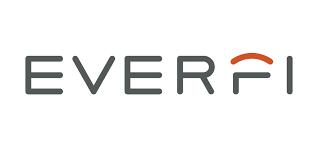

Circa provides OFCCP compliance management and recruiting technology solutions to deliver qualified candidates on a level, equitable playing field for organizations.
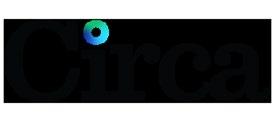
AMA provides organizations worldwide with the knowledge, skills, and tools to achieve performance excellence through a broad range of management development and educational services.
Art of Mentoring combines evidence-based mentoring expertise with the latest technological innovations to enable organisations to develop impactful, costeffective mentoring programs.
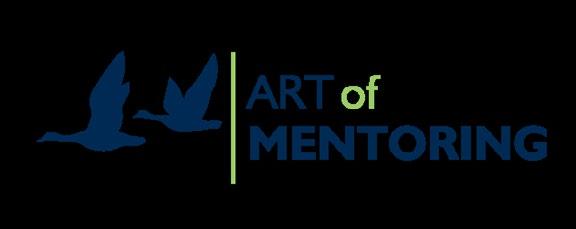
TRACOM is the leader in Social Intelligence training. We offer SOCIAL STYLE, Resilience, EQ and Agility assessments and training programs.

AMA provides organizations worldwide with the knowledge, skills, and tools to achieve performance excellence through a broad range of management development and educational services.
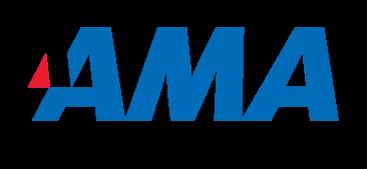 LEARN MORE LEARN MORE
LEARN MORE LEARN MORE
LEARN MORE LEARN MORE
LEARN MORE LEARN MORE

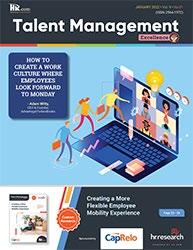
Informing, Educating, Enlightening and Assisting HR professionals in their personal and professional development, the Excellence series offers high-quality content through the publications!
